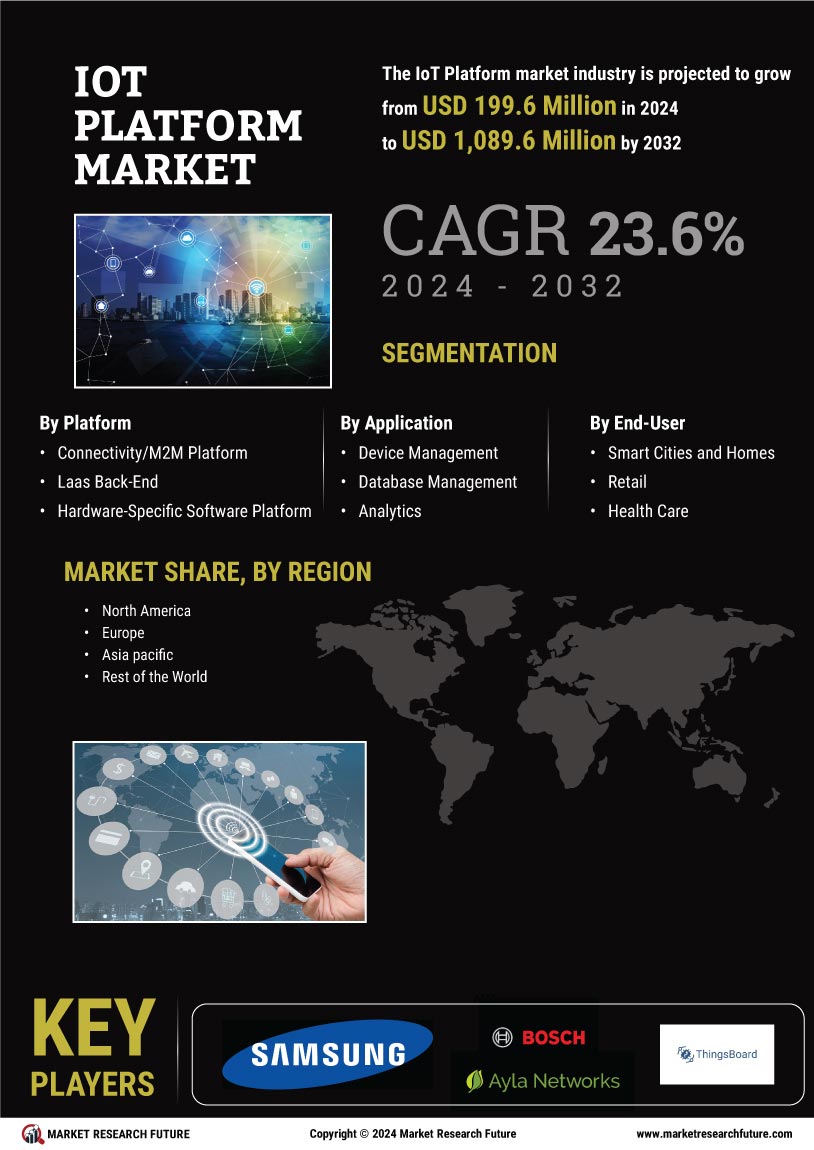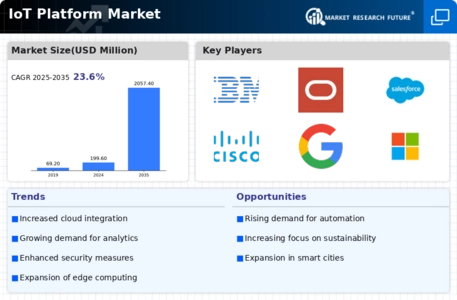Growing Need for Data Analytics
The increasing volume of data generated by IoT devices is driving the demand for advanced data analytics capabilities within the IoT Platform Market. Organizations are recognizing the value of data-driven decision-making and are seeking platforms that can provide actionable insights from the vast amounts of data collected. In 2025, The IoT Platform is projected to reach $274 billion, with a significant portion attributed to IoT data analytics. This trend underscores the necessity for IoT platforms that can integrate sophisticated analytics tools, enabling businesses to optimize operations, enhance customer experiences, and drive innovation.
Rising Demand for Smart Devices
The proliferation of smart devices is a primary driver for the IoT Platform Market. As consumers increasingly adopt smart home technologies, wearables, and connected appliances, the demand for robust IoT platforms intensifies. In 2025, it is estimated that the number of connected devices will surpass 30 billion, creating a substantial need for platforms that can manage and analyze data from these devices. This surge in device connectivity necessitates advanced IoT solutions that can ensure seamless integration and interoperability. Consequently, companies are investing heavily in IoT platforms to capitalize on this trend, which is expected to contribute significantly to market growth.
Regulatory Compliance and Standards
The IoT Platform Market is increasingly influenced by the need for regulatory compliance and adherence to industry standards. As IoT applications proliferate across various sectors, including healthcare, finance, and manufacturing, organizations must navigate a complex landscape of regulations to ensure data security and privacy. Compliance with standards such as GDPR and HIPAA is becoming paramount, prompting businesses to invest in IoT platforms that offer robust security features and compliance capabilities. This focus on regulatory adherence is likely to shape the development of IoT solutions, as companies strive to build trust with consumers and stakeholders while mitigating risks associated with data breaches.
Increased Investment in Smart Cities
The IoT Platform Industry. Governments and municipalities are investing in IoT technologies to improve urban infrastructure, enhance public services, and promote sustainability. By 2025, it is expected that investments in smart city projects will exceed $1 trillion, creating a substantial demand for IoT platforms that can support various applications, including traffic management, waste management, and energy efficiency. This investment not only drives the adoption of IoT solutions but also encourages innovation within the industry, as companies strive to develop platforms that can meet the unique challenges of urban environments.
Advancements in Connectivity Technologies
The evolution of connectivity technologies, such as 5G and LPWAN, is propelling the IoT Platform Market forward. These technologies enable faster data transmission and improved network reliability, which are crucial for the effective functioning of IoT applications. The rollout of 5G networks is anticipated to enhance the performance of IoT devices, allowing for real-time data processing and analytics. As a result, businesses are increasingly adopting IoT platforms that can leverage these advanced connectivity options. The market for IoT platforms is projected to grow at a compound annual growth rate of over 25% through 2025, driven by the need for enhanced connectivity solutions.

















Leave a Comment